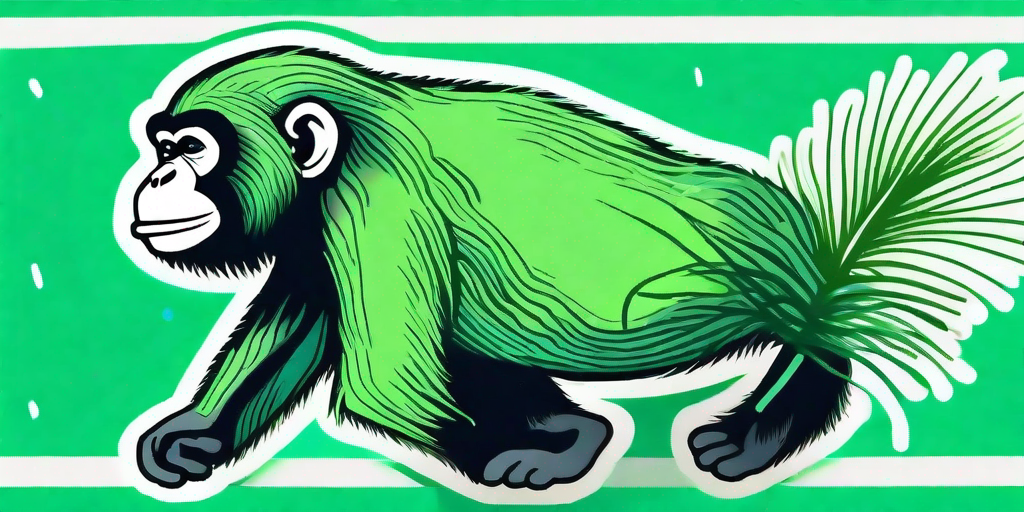
Monkey grass, known scientifically as Liriope, is a versatile and hardy ground cover that can transform your lawn into a lush, green paradise. But, like any plant, it requires a bit of know-how to transplant successfully. So, let's dive into the world of monkey grass and uncover the secrets of successful transplantation.
Understanding Monkey Grass
Before we start monkeying around with monkey grass (pun intended), it's important to understand what we're dealing with. Monkey grass is a perennial plant native to East Asia. It's known for its hardiness and adaptability, making it a popular choice for gardeners worldwide.
There are two main types of monkey grass: Liriope spicata (creeping lilyturf) and Liriope muscari (big blue lilyturf). The former spreads aggressively via underground stems, while the latter grows in neat, clump-forming tufts. Depending on your landscaping needs, you might prefer one over the other.
How to Transplant Monkey Grass
When to Transplant
Timing is crucial when it comes to transplanting monkey grass. The best time to do so is in the early spring or fall. During these seasons, the weather is cool and the soil is moist, creating ideal conditions for root growth.
Transplanting in the heat of summer or the freezing conditions of winter can stress the plant and hinder its growth. So, unless you want to play a game of Russian roulette with your monkey grass, stick to the recommended seasons.
Step-by-Step Guide
Now that we've got the timing down, let's move on to the actual transplanting process. Here's a cheeky step-by-step guide to help you navigate the process:
- Prepare the new planting site: Dig a hole that's twice as wide and just as deep as the root ball of the monkey grass.
- Remove the monkey grass from its current location: Use a garden fork or spade to gently lift the plant, taking care not to damage the roots.
- Place the monkey grass in the new hole: Make sure the top of the root ball is level with the soil surface. Backfill the hole with soil, firming it gently around the base of the plant.
- Water thoroughly: Give your newly transplanted monkey grass a good drink to help it settle in its new home.
Caring for Transplanted Monkey Grass
Transplanting is only half the battle. Once your monkey grass is in its new home, you need to provide it with the right care to ensure it thrives.
Firstly, water your monkey grass regularly, especially during the first few weeks after transplanting. However, be careful not to overwater, as this can lead to root rot. A good rule of thumb is to water when the top inch of soil feels dry to the touch.
Secondly, feed your monkey grass with a balanced fertilizer in the spring to promote healthy growth. Lastly, don't forget to mulch around the base of the plant to conserve moisture and suppress weeds.
Common Problems and Solutions
Even with the best care, your monkey grass may encounter a few problems. But don't panic! Most of these issues are easily solvable.
- Yellowing leaves: This could be a sign of overwatering or poor drainage. Reduce watering and ensure your monkey grass is planted in well-draining soil.
- Slow growth: If your monkey grass seems to be growing at a snail's pace, it might be lacking nutrients. Apply a balanced fertilizer to give it a boost.
- Leaf spot: This fungal disease causes brown or black spots on the leaves. To treat it, remove the affected leaves and apply a fungicide.
Frequently Asked Questions
Can I transplant monkey grass in the summer?
While it's possible to transplant monkey grass in the summer, it's not recommended. The heat and dry conditions can stress the plant and hinder its growth.
How often should I water transplanted monkey grass?
Water your transplanted monkey grass regularly, especially during the first few weeks. However, be careful not to overwater. A good rule of thumb is to water when the top inch of soil feels dry to the touch.
Why is my transplanted monkey grass turning yellow?
Yellowing leaves could be a sign of overwatering or poor drainage. Reduce watering and ensure your monkey grass is planted in well-draining soil.
Conclusion
Transplanting monkey grass doesn't have to be a daunting task. With the right timing, proper technique, and appropriate care, you can successfully transplant monkey grass and create a lush, green lawn that's the envy of your neighbors. So, why not give it a try? After all, monkeying around with monkey grass can be quite fun!















